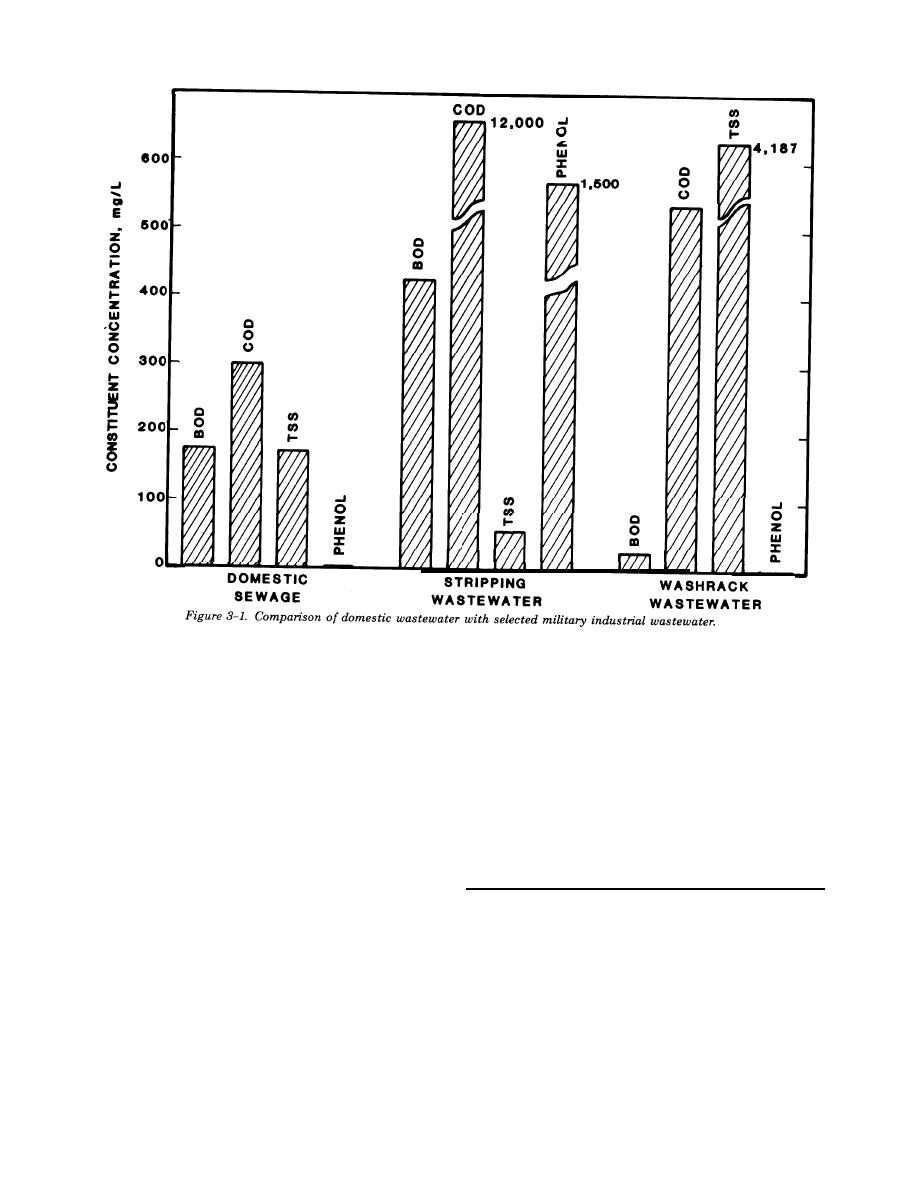
TM 5 - 8 1 4 - 8
For this reason comparison between domestic and
rameters of special significance such as phenol or
industrial wastes is made on a case-by-case basis.
cyanide. Figure 3-1 schematically illustrates a
However, some general conclusions may be drawn
comparison between domestic sewage and mili-
from the major differences between domestic and
tary industrial type wastewaters. Figure 3-1 and
industrial wastes.
table 3-5 present a comparison between domestic
(1) First, a major portion of the BOD in
sewage characteristics, aircraft stripping waste-
domestic sewage is present in colloidal or sus-
water, and vehicle washrack discharges.
pended form while BOD in industrial wastewaters
is usually soluble in character. The non-de-
Table 3-5. Comparison of domestic waste water
gradable COD in domestic sewage is low (usually
characteristics with selected military industrial wastewater
less than 200 mg/L) while industrial wastewaters
(mg/L unless noted otherwise)
may have a non-degradable COD level in excess
Aircraft
of 500 mg/L. Domestic sewage has a surplus of
Sanitary
Stripping
Washrack
nutrients, nitrogen and phosphorus, relative to
Wastewater
Wastewater
Wastewater
the BOD present. Many industrial wastewaters
pH (units)
6.8-7.5
6.2-7.5
7.0
are deficient in nitrogen and phosphorus.
BOD
75-276
375-478
10-29
COD
195-436
5,388-18,946
(2) Total dissolved solids (TDS) in domestic
105-1,620
TSS
83-258
34-76
180-12,390
sewage primarily reflect the concentration of the
Phenol
Nil
71-2,220
Nil
carrier water, while many industrial activities
substantially increase the TDS through the pro-
b. Characteristics of domestic wastewaters. Do-
cess areas. Certain industrial wastes contain pa-
mestic sewage is composed of organic matter
3-10



 Previous Page
Previous Page
